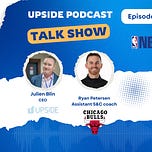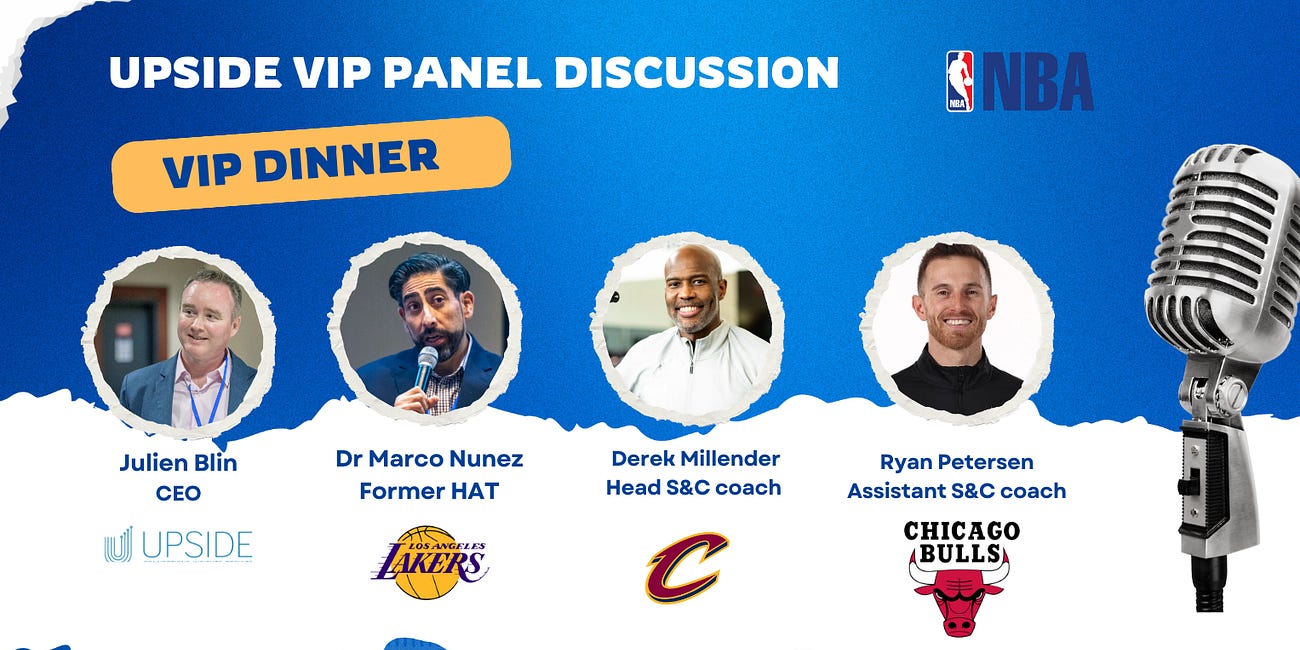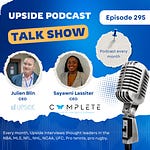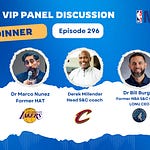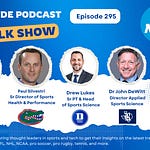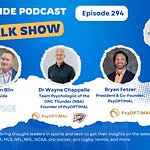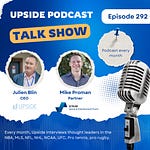Today we have the honor of interviewing Ryan Peterson the assistant S&C coach for the Chicago Bulls, a top NBA team.
You can watch the video interview below by clicking on the Youtube link. You can also listen to the audio interview by clicking on the link at the top of the page:
📝Show Notes: Through this interview, we touched on his background, his role at the Chicago bulls, his approach towards training, S&C, rehab and innovation. We also discussed his preferred technologies, how he sees the future of S&C evolving in the coming years. He also gave us his thoughts on what he would build if he could build any tech and had unlimited resources.
You can read the full transcript of the podcast interview with Ryan located at the top of this blog post.
Here are the quotes from the interview with Ryan:
1. Tell me about your background
“I’m originally from southern Idaho, from a fairly small town. I grew up playing football, basketball, baseball, and spending a lot of time outdoors. I went to the University of Utah where I studied biology and chemistry with a pre-med plan, but as I got closer to graduation I realized physical therapy was a better fit for me personally. I went to PT school at the University of Montana, spent three years there, and then worked in outpatient orthopedic clinics. Over time I found myself most interested in the athletes I was treating, which was a small part of my caseload but the most engaging for me.”
“When I moved back to Salt Lake, I connected with the US Ski and Snowboard team—at first just volunteering, but eventually traveling with their teams as a physical therapist. At the same time I did a strength and conditioning internship with the University of Utah football staff, and later stayed on as a kind of hybrid rehab and strength coach. That blend of rehab and performance was what I really wanted to do, and it’s what opened the path that eventually led me to the NBA.”
2. What is your role at the Chicago Bulls?
“My position is assistant strength and conditioning coach, with an emphasis in rehab and injury mitigation programming. We have an excellent athletic training staff, so I’m not involved in day-to-day clinical work, but I have a lot of influence in late-stage return-to-play testing and programming. I also lead programming on soft-tissue injury mitigation while contributing to all of the team’s daily strength and conditioning work.”
“I personally travel with the team to every game, home and away. Sometimes when a player has a long-term rehab they’ll stay in Chicago and work with staff who rotate staying behind, but many times even guys in rehab will come on the road and do their work with us. It just depends on their situation and what resources we have access to on the road.”
3. What is your approach towards training, S&C, rehab and innovation?
“At a base level my approach is to keep things as simple as possible and do the simple things really well. Early in my career I fell into the trap of trying to do too many things at a moderate level instead of focusing on a few things and executing them really well. Simplifying allows the athlete to get a ton of repetitions, perfect their coordination, and build a foundation that makes everything more complex down the line much more effective.”
“I see rehab and strength and conditioning as much closer than most people think. It’s a continuum—early rehab is cautious and limited, but we can still train the rest of the body hard. As healing progresses, it blends naturally into performance-based training. Our job is to keep the gap between ‘injured’ and ‘ready to perform’ as small as possible so the return doesn’t come with a big spike in load or risk.”
“You can get so much out of calisthenics, running, skipping, change of direction, bodyweight squats, planks—just really refining how you move your body in space. Those simple things are hugely powerful, especially for younger athletes. They build an incredible foundation that sets them up to get the most out of heavier loading and advanced training later on.”
4. What are your preferred tech and why?
“I’ve always valued simple, cost-effective tools. Before the NBA, budgets were very different, so I relied on things like a strain gauge called Tindeq. It’s small, portable, easy to use, and it gives an objective number for force output. That’s incredibly useful both for guiding rehab progression and for performance training.”
“I also like app-based tools like My Jump, My Sprint, and Runmatic. With just a phone camera you can measure contact times, jump height, and break down running mechanics. They’re cheap, simple, and accessible to any practitioner at any level. Of course now we have access to force plates and motion capture, which provide richer data, but even with advanced tools I think you can build great programs just using the basics.”
“The main criteria for me are: does it solve a problem we actually have, is it validated and reliable, and can I use it consistently with athletes without friction? I don’t want tech just to have tech—it has to fit the workflow and add value every day.”
5. How do you see the future of S&C evolving in the coming years?
“We’re seeing a big expansion in quantification—velocity-based tracking, portable sensors, variable resistance machines. All of that is valuable, but we’re also asking: is there a point where it’s too much data? How much of it is actionable? At some stage I think the pendulum will swing back toward the art of coaching—having a skilled eye for movement, building strong relationships with athletes, and getting their buy-in. If you can’t connect with athletes, it doesn’t matter how advanced your tech is.”
“I think the real skill of the future will be in coaches who can filter. There will be so much tech available that the best practitioners will be the ones who can determine what’s genuinely useful and ignore what’s distracting or irrelevant. Those who stay grounded, have a clear vision, and only adopt what aligns with their goals will move ahead of everyone else.”
6. If you could build any tech and had unlimited resources, what would you build and why?
“If I could build anything, it would be a really reliable way to evaluate what’s happening to a tendon when it’s loaded. Tendon health is a huge point of emphasis in the NBA right now—reducing tendon injuries and catastrophic events. Right now we have proxy measures like strain gauges, ultrasound, and shear wave imaging, but they only tell part of the story. Two athletes can produce the same external force, but their tendons respond very differently.”
“I’d love a tool that could tell us, in real time and at a microscopic level, how load is being transmitted through a tendon—the rate, the magnitude, how much it stretches, and how it changes over time. That would completely change how we prescribe weight-room work, manage load, and design rehab. It would take us from estimates and extrapolations to precision.”
You may also like:
🔥Upside NBA Video Chat with Dr Marco Nunez (Ex LA Lakers/NBA), Derek Millender (Cavs/NBA), Ryan Petersen (Chicago Bulls / NBA) on The Life after the NBA, Technology Adoption, Performance Optimization
This week we have the honor to interview again a group of NBA sports performance executives to talk about the latest trends in the world of sports performance and rehabilitation.
🔥Upside Chat with Chris Chase (Memphis Grizzlies/NBA), Dr Marco Nunez (ex LA Lakers/NBA), Dr Andy Barr (Quantum Performance), Derek Millender (Cleveland Cavaliers /NBA).
This week we have the honor to interview again a group of NBA sports performance executives:

